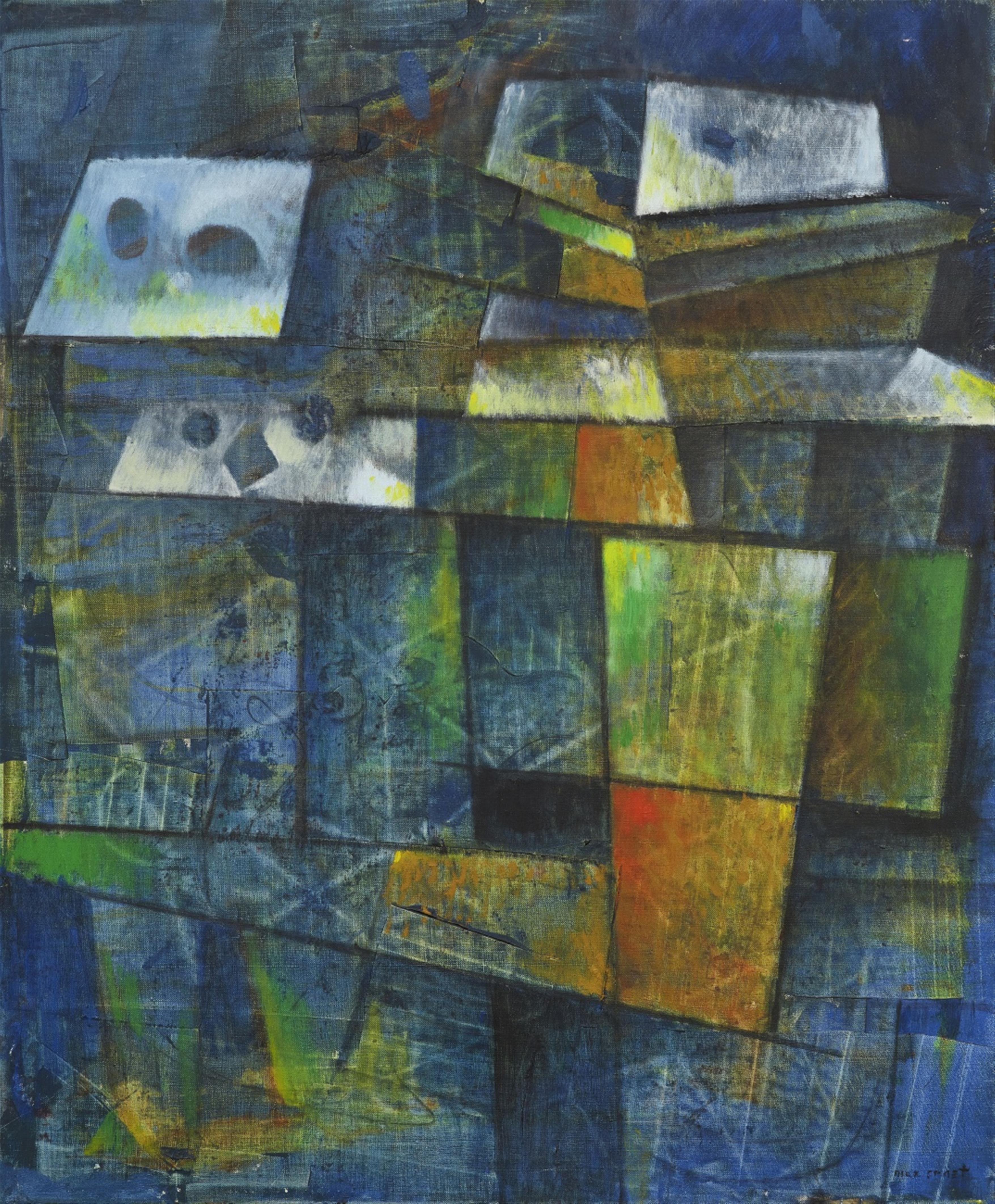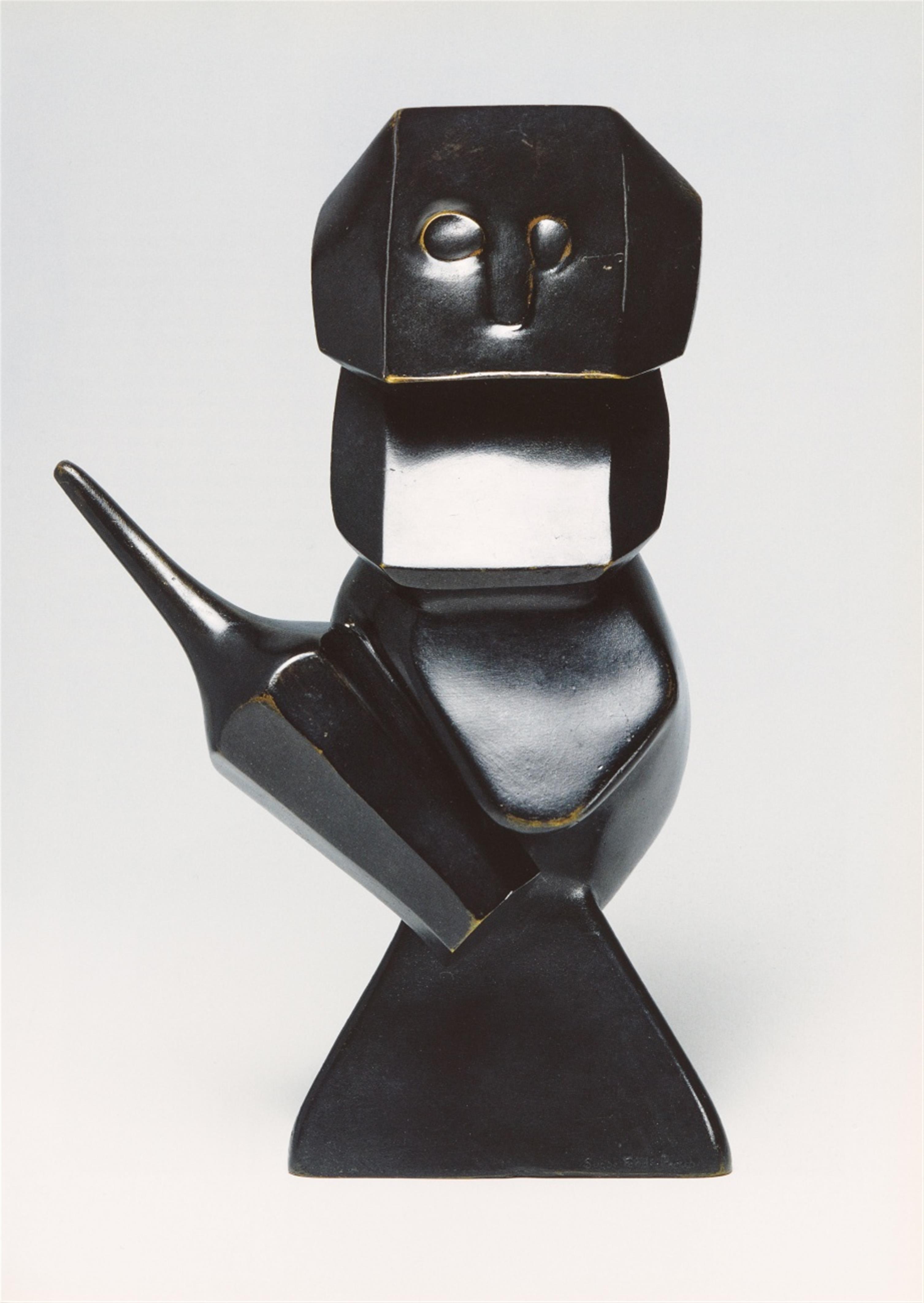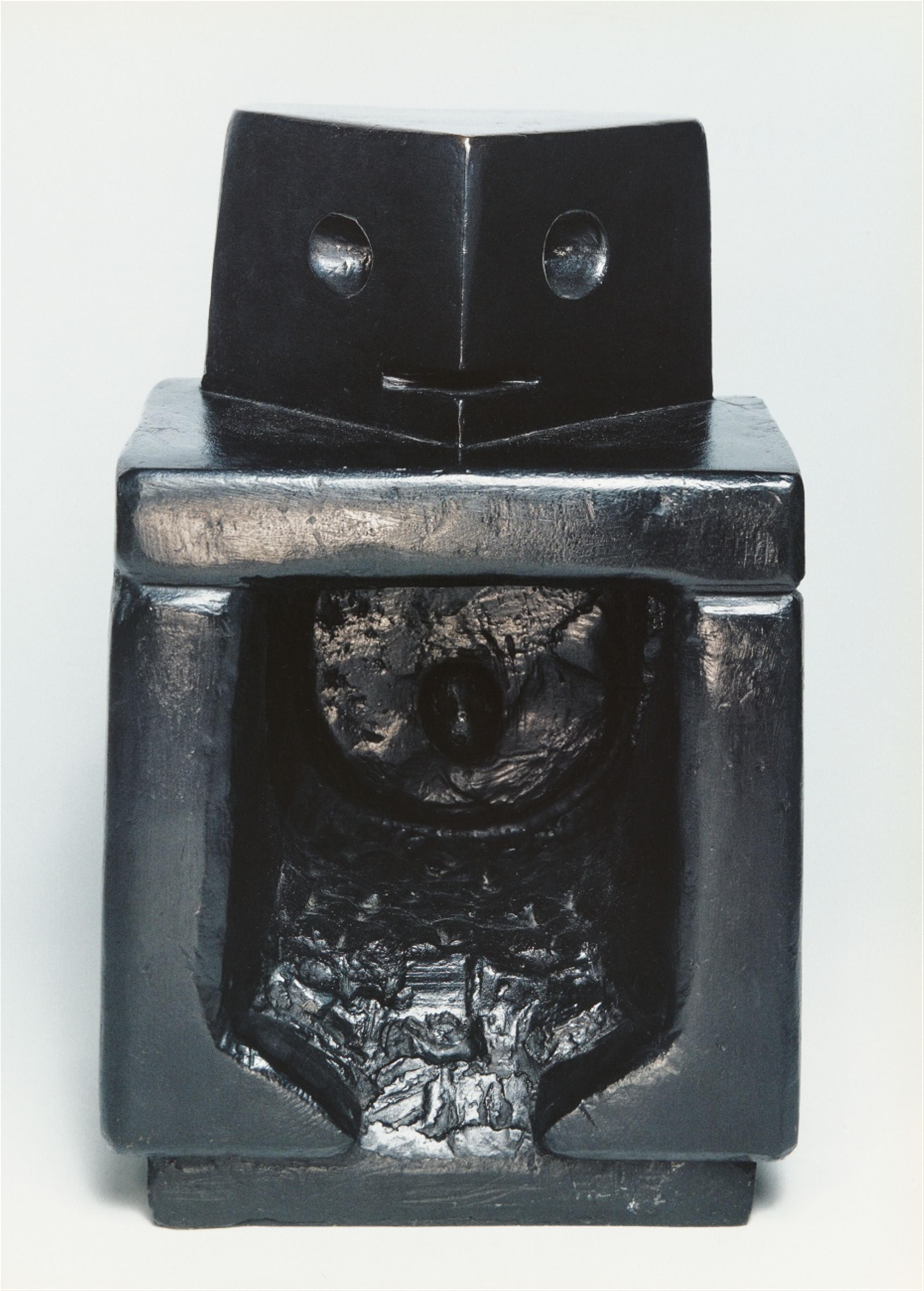Max Ernst
Flaneurs (Les enfants de la Huchette)
1954
Oil on canvas 64.5 x 53.4 cm Framed in studio frame. Signed 'max ernst' in black lower right and verso on canvas signed, dated, and titled 'flaneurs max ernst 54' in black brush. - In fine condition with fresh colours, a few minute retouches.
The painting “Flaneurs” simultaneously unites a number of extremely characteristic elements from Max's Ernst's universe.
The bird-like heads of the depicted figures suggest Ernst's most deeply individual self, the “Vogelobrer Loplop”, as well as the forms and figures of Native American mythology - a reminder of the time he spent in Arizona and his interest in Kachina dolls. The painted surface points to Max Ernst's cherished frottage: a rubbing technique resembling tracing with found objects.
Max Ernst's work had already been inhabited by “Kopfwesen” - head creatures - since the mid-1930s. He created carved and cast sculptures such as “Gaia” or the moon asparagus “Les asperges de la lune”, which are cited in the heads of the passage to the left in the present work, while the figure on the right with the triangular head may have in turn provided the inspiration for the 1965 sculpture “Völkerkundemuseum” (see ref. ill. 1 and 2). The self-referential aspect, a certain form of automatism and self-abnegating surrender to the found world of objects as well as the imaginary presumably also had their origins in the spirit of surrealism. Ernst himself compared his finding of ideas with catching fish. Thus “no diver” knows “what he will bring back before he jumps in. Likewise the painter does not choose his subjects […]. Burdening oneself with such a thing - however subversive, however extraordinary it might be - and handling it in an academic manner, would only permit a work of scant revolutionary significance to emerge” (cited in: Jürgen Pech, Max Ernst. Plastische Werke, Cologne 2005, p. 176).
The title “Flaneurs” is borrowed from French literature: in the context of this painting, the term alludes to the figures who have evidently fixed their interested gazes on the same point. As they stroll past the city's endless display windows and glass-covered shopping passages, the structure of the picture becomes compartmentalised into spectral colours and it fragments the bodies like a mirror.
The subtitle “Les enfants de la Huchette” presumably refers to the Rue de la Huchette, bustling with pedestrians and one of the oldest streets along Paris's Rive Gauche.
Max Ernst, who had not returned to Paris until 1953, won the grand prize for painting at the Venice Biennale the same year our picture was created. The work “Flaneurs” had already been exhibited by Ernst Beyeler in 1955 and spent a long time in the collection of René Rasmussen, the great Parisian gallerist for surrealist art.
Catalogue Raisonné
Spies/Metken 3044
Certificate
We would like to thank Simon Crameri, Fondation Beyeler, Basel, for kind support.
Provenance
Galerie René Rasmussen, Paris (until 1978); by inheritance in Private possession, Rhineland/Baden-Württemberg
Literature
Cimaise, 5th vol. Nov./Dec. 1957, no. 2, p. 28 with ill.
Exhibitions
Basel 1955 (Galerie Beyeler), Max Ernst, cat. no. 21






